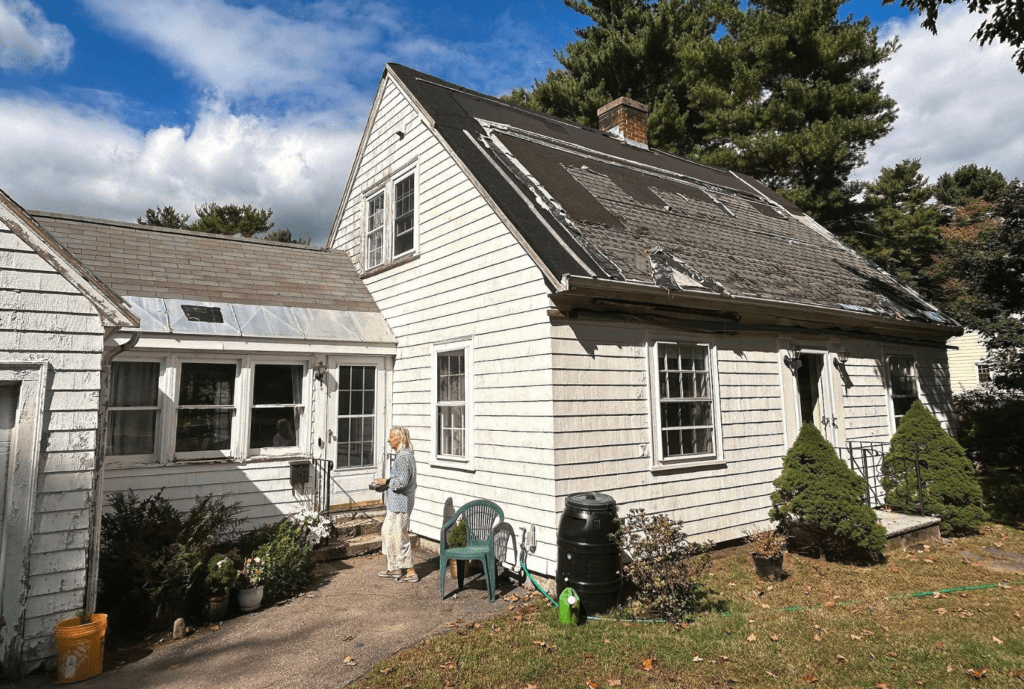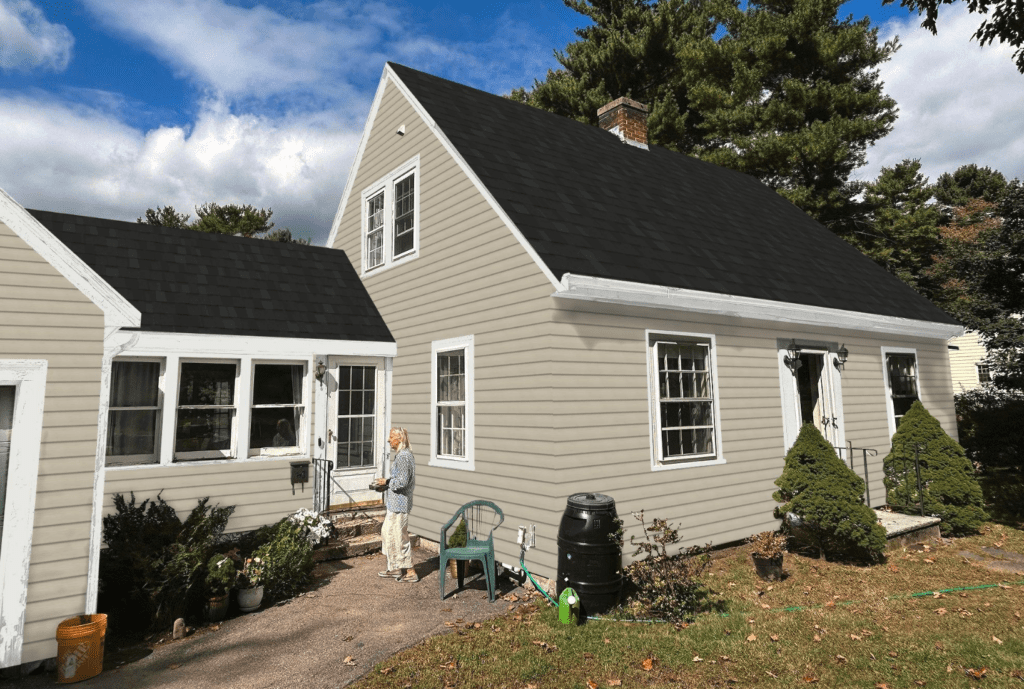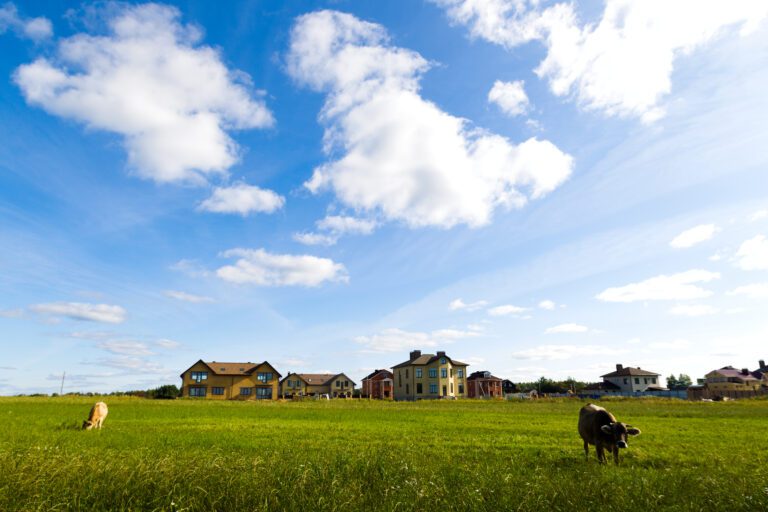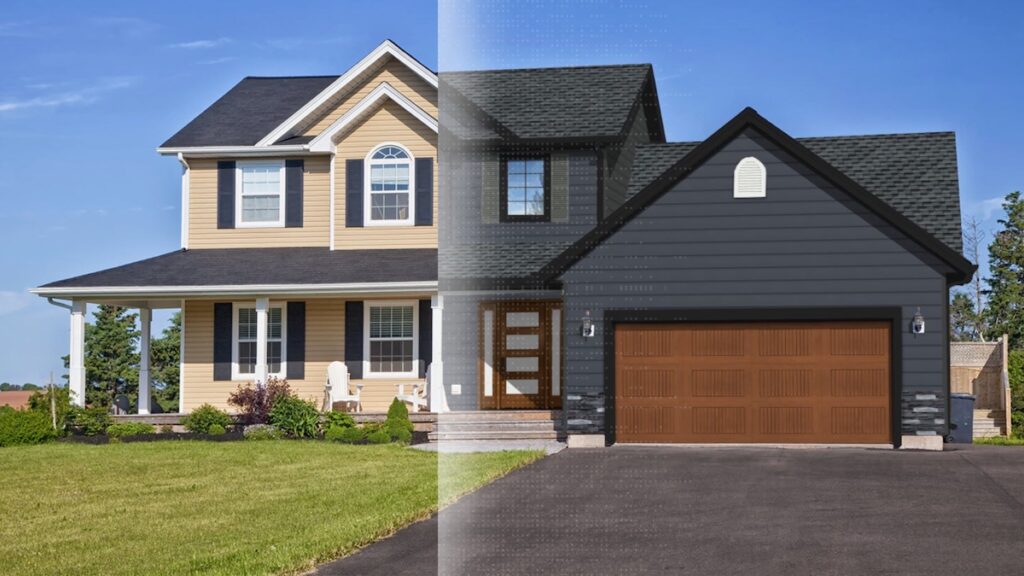The roofing industry has come a long way from basic asphalt shingles. Today’s new roofing materials offer durability, style, energy efficiency, and even power generation. Whether you’re a homeowner doing a full roof replacement or a contractor advising clients, it’s essential to match the right roof material to your climate, budget, and structural needs.
Here are the highlights:
Metal roofing, synthetic slate, and architectural shingles are rising stars for durability and aesthetics.
Solar shingles and cool roof systems combine environmental benefits with long-term savings.
Clay tile and concrete tile roofs offer longevity in dry climates but require strong structural support.
Synthetic roofing materials mimic high-end looks like wood or slate with lower maintenance.
Asphalt shingle roofs are still a top choice for affordability and ease of installation.
For sheds or low-slope roofs, roll roofing provides a quick, cost-effective option.
Evaluate performance factors like impact resistance, fire resistance, roof weight, and underlayment quality.
Always consult a roof contractor to assess ventilation, insulation, and reinforcement needs.
Roof choices matter—choose materials rated for your weather, especially in areas prone to hail, snow, or wildfires.
Looking to get new roofing? Upload a photo to our free visualizer tool to try on new styles. Click here to check it out.
Introduction
The roofing industry has transformed dramatically in recent years. As homeowners and roof contractors seek better performance, lower maintenance, and enhanced curb appeal, a new wave of roofing materials has emerged. From solar shingles to metal shingles and synthetic slate, this guide explores the most durable, energy-efficient, and stylish solutions available today.

Why the Buzz Around New Roofing Materials?
Today’s homeowners are more informed than ever. With rising concerns around climate, durability, and cost-effectiveness, traditional roofing just doesn’t cut it anymore. Whether you’re planning a full roof replacement or researching the best roof material for your next build, understanding the latest options can save money and prevent long-term headaches.
Most Popular Types of New Roof Materials
Asphalt Shingles (Still Going Strong)
Despite the rise in alternatives, the asphalt shingle remains one of the most widely used roof materials in North America. It’s affordable, easy to install, and comes in a variety of colors and textures. Modern asphalt shingle roof systems now include architectural shingles, which provide better wind resistance and longevity.
Pros: Cost-effective, easy replacement
Cons: Not the most durable, susceptible to hail and wind damage
Metal Roofs: Strong, Sleek, and Sustainable
The modern metal roof has gained popularity among both residential and commercial builds. Offering durability, fire resistance, and energy efficiency, metal roofing options like stand seam metal and metal shingles now rival traditional choices.
Types: Seam metal roof, corrugated panels, metal shingle, metal roof metal systems
Pros: Long lifespan, low maintenance, excellent in extreme weather
Cons: Expensive upfront, can be heavy without proper structural support
Synthetic Roofing: The Best of All Worlds?
Synthetic materials mimic natural products like slate, wood shingles, or clay tile, but without the drawbacks.
Examples: Synthetic slate tile, polymer wood shingle, rubber slate roof
Pros: Lightweight, durable, impact-resistant, eco-friendly
Cons: Higher upfront costs than asphalt, but often offset by lower maintenance
Clay and Concrete Tile Roofs
These materials are especially popular in hot, dry climates. A clay tile roof offers timeless beauty, while a concrete tile roof is often more affordable but equally strong.
Pros: Fire-resistant, long-lasting, great durability
Cons: Heavy, can crack under impact, requires reinforced structural support
Specialty Roofing for Unique Needs
Slate Roofs: Old-World Luxury
A natural slate roof is one of the oldest and most durable roofing systems. While stunning, it’s extremely heavy and expensive to install and repair.
Alternatives: Synthetic slate, slate tile
Pros: Aesthetic appeal, longevity, fire-resistant
Cons: Costly, prone to breakage if mishandled
Green and Cool Roofs
Looking to go eco-friendly? A green roof is covered in vegetation and offers insulation, while a cool roof reflects sunlight to reduce indoor temperatures.
Pros: Energy-efficient, eco-conscious
Cons: High maintenance, upfront investment
Solar Shingles: The Future of Energy-Efficient Roofing
Solar shingles combine roofing and energy generation. Though not yet widespread, they are increasingly being adopted in areas with high solar exposure.
Pros: Generates power, saves on energy bills
Cons: Limited availability, higher costs
Roll Roofing: Fast and Functional
Roll roof is an affordable solution for sheds, garages, and low-slope applications. It lacks the longevity of other systems but is perfect for quick installs.
Pros: Inexpensive, easy to install
Cons: Not suitable for homes with steep slop roofs


ROOFING VISUALIZER TOOL
See Your Home with a New Roof in Seconds
Help your homeowners visualize new roofing and colors on their own home with Renoworks’ AI technology in seconds.
- Easy-to-use interface designed for contractors and professionals working with homeowners.
Understanding Roofing Performance Factors
Durability and Resistance
New roofing materials are tested for durability under various environmental conditions. Look for fire resistant, wind-rated, and impact-resistant options, especially in hail-prone or wildfire-prone areas.
Durable roofs often mean fewer maintenance issues.
Protection from mold, rot, and rain is crucial.
Weight and Structural Needs
Some options like clay tile and slate are heavy, requiring proper structural reinforcement. Lightweight alternatives like synthetic or metal roofing reduce load stress on your building.
Cost Considerations
Expensive materials like natural slate offer unmatched longevity.
Maintenance frequency and replacement costs should be factored in.
Don’t forget hidden costs like underlayment, labor, and roofer availability.
Best Roof Material for Each Scenario
For Longevity
Slate roof or metal roof with stand seam metal panels
For Budget Builds
Asphalt shingle or roll roof
For Eco-Conscious Homeowners
Green roof, cool roof, or solar shingle
For Snow or Hail Regions
Metal roofing or synthetic options rated for hail resistance
For Flat Roofs
Modified bitumen, roll roof, or membrane systems
Choosing the Right Roof System
A roof system isn’t just about surface materials. It includes:
Underlayment
Drip edge
Flashing
Ventilation
Insulation
Every roof type benefits from a properly installed and sealed roof system to prevent damage from wind, water, or mold.
What to Ask Your Roof Contractor
Before you commit:
What type of roof is best for my climate?
How durable is the proposed roof material?
Will the material resist hail, wind, or rain?
What’s the projected maintenance schedule?
Do I need structural reinforcement?
A reliable roof contractor should be transparent about all these aspects.
Key Takeaways
New roof materials now include synthetic, metal, solar shingle, and cool roof options.
Asphalt shingle, metal roof, and synthetic slate are the most popular picks.
Consider durability, weather resistance, and maintenance costs.
Match the roof type to your region’s climate and your home’s structural limits.


ROOFING VISUALIZER TOOL
See Your Home with a New Roof in Seconds
Help your homeowners visualize new roofing and colors on their own home with Renoworks’ AI technology in seconds.
- Easy-to-use interface designed for contractors and professionals working with homeowners.
Final Thoughts: Simplify Your Roofing Decisions with Renoworks
Navigating today’s roofing landscape can be challenging. With so many innovative materials now on the market—from solar shingles and synthetic slate to classic asphalt and premium metal—it’s not always easy to know which one is right for your home or project. Factors like climate, budget, structural load, and aesthetic preferences all play a role. And yet, many homeowners still make decisions based on small physical samples or sales brochures alone.
This is where Renoworks makes all the difference.
Renoworks is a powerful roofing visualization platform that helps homeowners and contractors confidently choose the best roofing materials for any project. By uploading a photo of a home or selecting from a template, users can apply different roofing styles, colors, and materials in real time—creating a clear visual of how the final result will look. Whether you’re comparing asphalt shingles to metal roofing or testing out a new synthetic slate in a specific color palette, Renoworks eliminates the guesswork.
But it’s not just about visuals. For contractors, Renoworks is also a business accelerator. You can use it as a sales enablement tool to walk clients through material comparisons, highlight premium upsell options, and provide a personalized design experience that helps build trust. The result? Faster approvals, fewer callbacks, and more satisfied customers.
With Renoworks, you’re not just choosing a roofing material—you’re investing in a smarter decision-making process that saves time, reduces costly mistakes, and ensures the end result aligns with your vision.
Whether you’re a contractor or homeowner, Renoworks gives you the clarity and confidence to design and build smarter. Try it today and see your roof before you replace it.
We hope you enjoyed the read!
What is the best roof material for longevity?
Metal roof and slate roof are among the most long-lasting.
Is a metal roof better than asphalt shingles?
Yes, metal roofing is more durable, energy-efficient, and fire-resistant, but also more expensive.
Are synthetic roofing materials worth it?
Yes, they offer the look of natural materials with better durability and lower maintenance.
What’s the downside of a clay tile roof?
It’s heavy and requires reinforced structural support.
What is the most affordable roofing option?
Roll roof and asphalt shingles are budget-friendly.
Is a cool roof the same as a green roof?
No. A cool roof reflects heat, while a green roof has vegetation.
Do solar shingles really work?
Yes, they generate electricity and reduce energy bills over time.
What’s a seam metal roof?
It’s a stand seam metal system with raised seams for water tightness.
Are wood shingles still a good option?
Yes, but they require more maintenance and aren’t very fire resistant.
Can I install a new roof over an old one?
It depends on your local code and the roof material weight.
Is slate too heavy for my house?
A natural slate roof may require structural evaluation.
What is architectural shingle?
It’s a type of asphalt shingle with added texture and strength.
What causes granule loss on shingles?
Age, weather, and poor maintenance.
Can roof panels be replaced individually?
Yes, especially in metal roof and panel systems.
Are flat roofs more prone to leaks?
Yes, if not properly sloped or drained.
Is roof underlayment important?
Absolutely. It protects your deck and enhances roof system performance.
What’s the role of a roofer?
A roofer installs, repairs, and maintains your roof type.
Are fire-resistant roofs required in wildfire zones?
Often, yes. Look for fire resistant materials like metal or slate.
How do I reduce mold risk?
Ensure good ventilation and rain protection.
Stand seam metal, synthetic, or asphalt shingle roof systems with wind ratings.
By understanding today’s best roof materials, you’ll be equipped to make the smartest investment for your home. From climate performance to cost and durability, there’s a new roofing material designed for every need and style.
Related Articles
Continue exploring this topic with these related articles, or read one of our case studies to see how visualization has helped remodelers save time and increase their profits.





